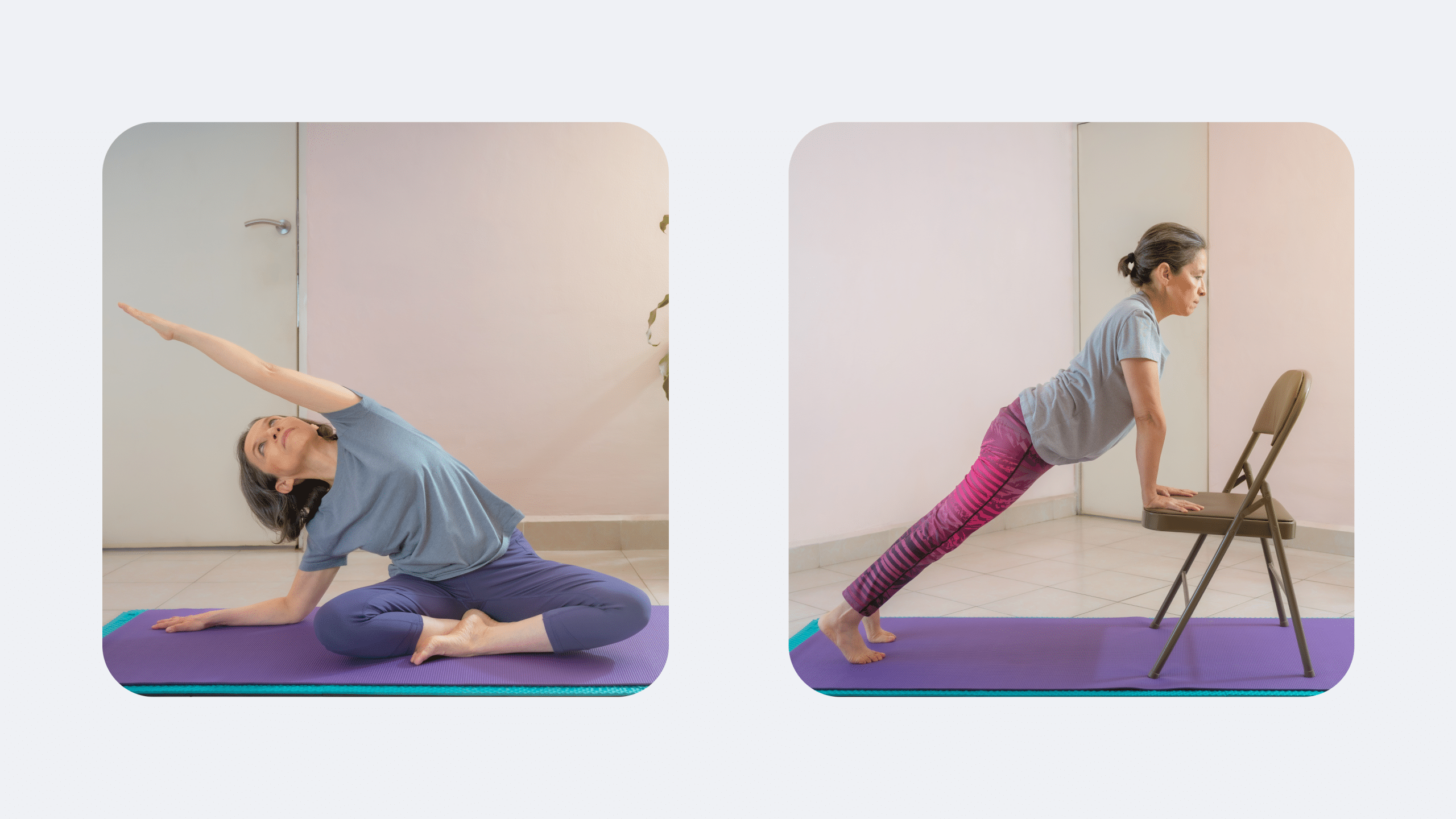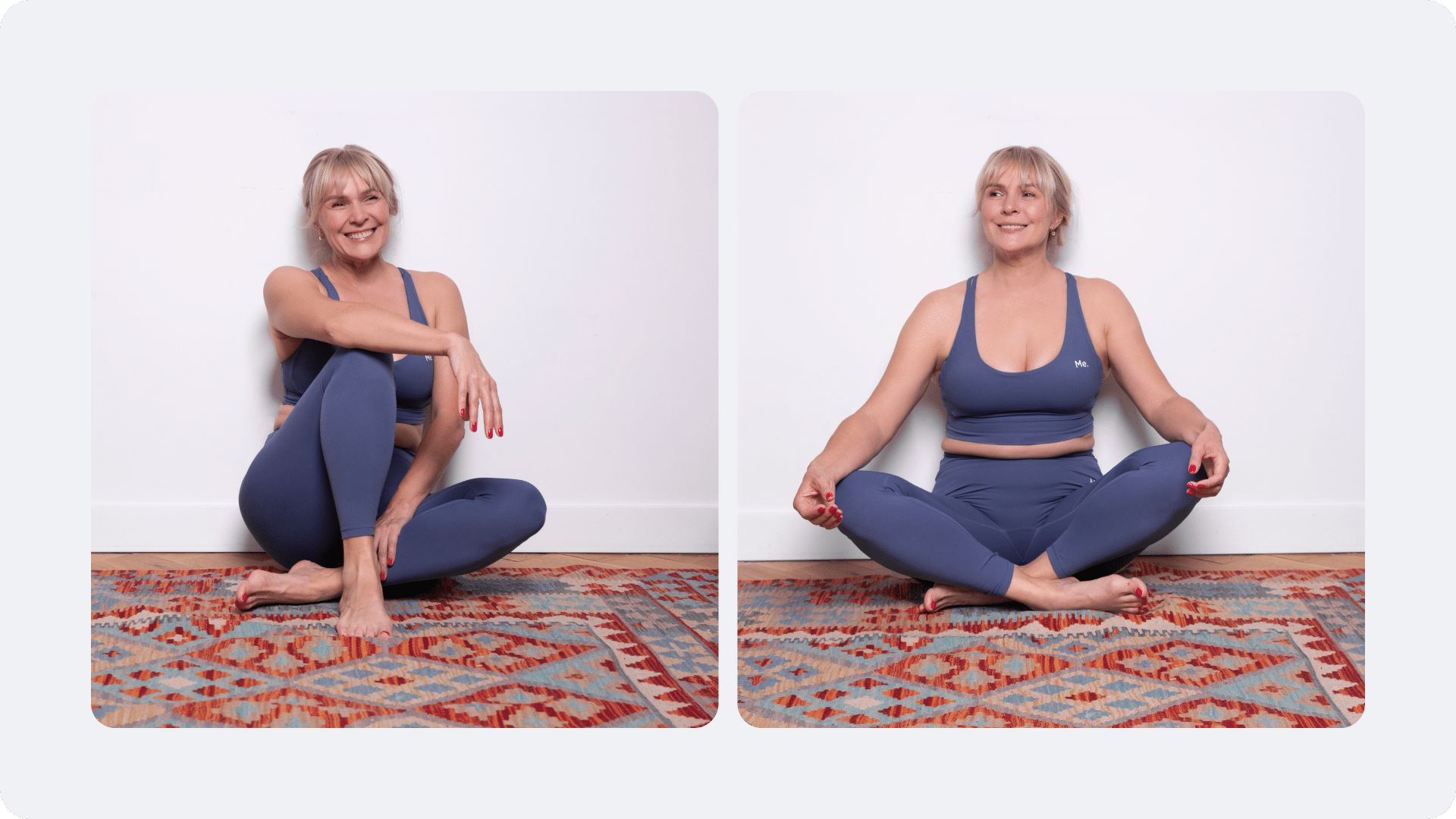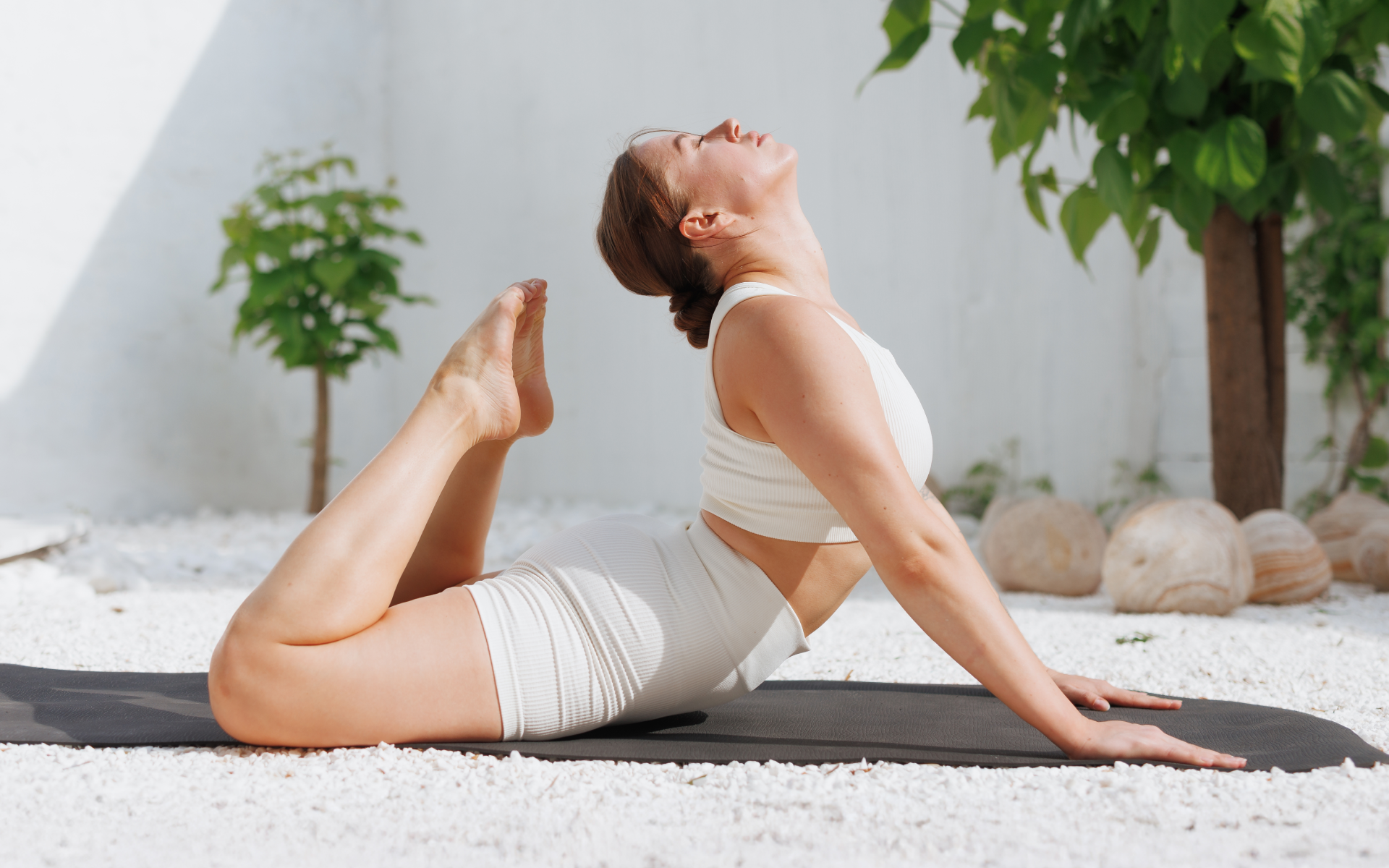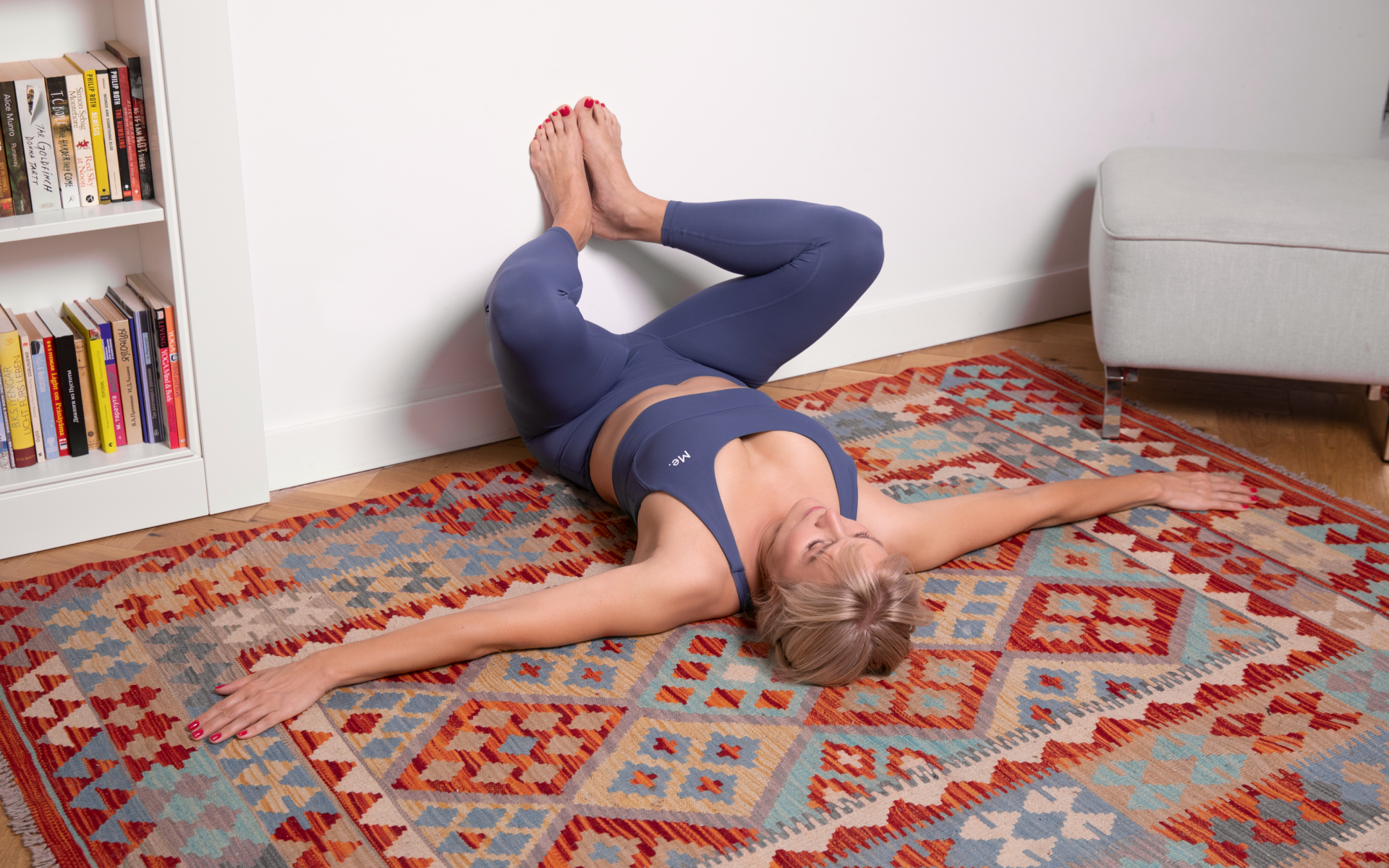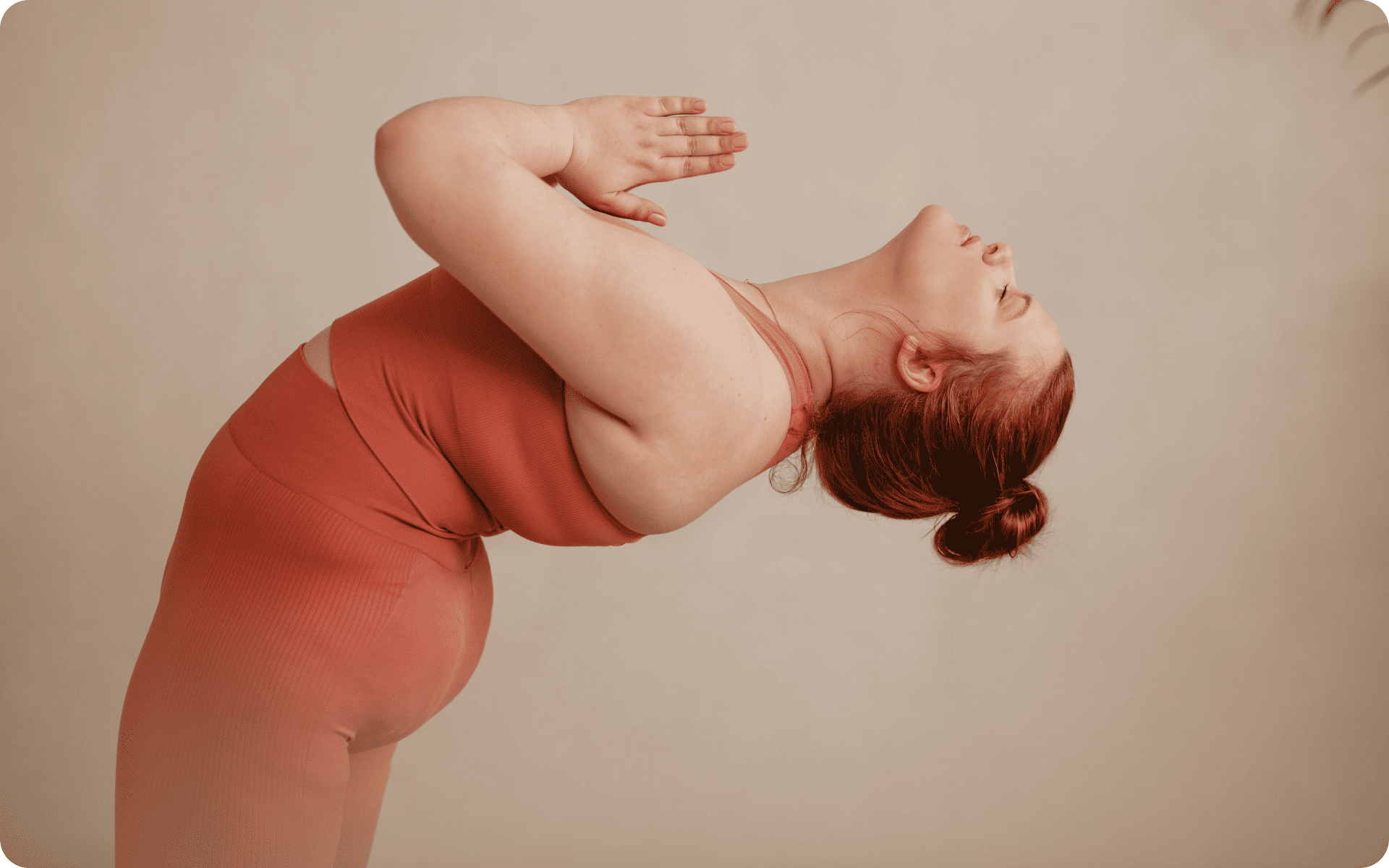It has been known for years that yoga increases physical flexibility, mental clarity, and emotional balance. But now people are looking for ways to combine yoga with other types of exercise, promoting new exciting workouts.
You’ve probably heard of chair yoga, sofa yoga, and acro yoga, but have you heard of trapeze yoga? With the addition of trapeze techniques, practitioners can take their practice to new heights, literally.
When you add aerial elements to traditional yoga poses, trapeze yoga challenges the body and encourages a deeper connection to gravity and space. It’s an immersive experience where people can test their limits and build strength and confidence.
Let’s get into yoga poses with trapeze. You’ll find it helps release tension in the body, strengthens the core, and can promote a relaxing environment through inversions and floating.
Understanding Trapeze Yoga
What Is Trapeze Yoga?
Trapeze yoga, also known as aerial yoga, involves performing yoga poses in the air using trapeze equipment, such as a fabric hammock or trapeze. It combines elements of traditional yoga, Pilates, and aerial acrobatics to give you a full-body workout that increases flexibility, strength, and balance.
Unlike traditional yoga on a mat, this type of suspension yoga allows you to do gravity-defying poses and movements that are more challenging to do on the ground.
The philosophy of trapeze yoga is about freedom, exploration, and mindfulness. By including aerial techniques, you can feel liberated and playful while maintaining the meditative focus of traditional yoga (and who doesn’t like to be suspended in the air?).
The hammock is both a support and a prop, allowing for deeper stretches, more range of motion, and a new perspective on familiar poses. This blend of physical and mental engagement is holistic well-being.
The Philosophy Behind Trapeze Yoga
The philosophy of trapeze yoga revolves around the principles of freedom, exploration, and mindfulness. By including aerial techniques, practitioners can experience a sense of liberation and playfulness while maintaining the meditative focus of traditional yoga.
The hammock serves as both a support and a prop, which allows for deeper stretches, a greater range of motion, and a unique perspective on familiar poses. This blend of physical and mental engagement fosters a holistic approach to well-being.
Benefits of Trapeze Yoga
Trapeze yoga has many benefits beyond traditional yoga, including:
- Flexibility: The hammock allows for deeper stretches and more flexibility (1).
- Strength: Different poses suspended target different muscle groups to build strength throughout the body (4).
- Balance: The aerial environment helps to improve balance and coordination as you learn to control your movements.
- Stress Relief: The meditative aspect of being suspended can reduce stress and anxiety and leave you feeling calm and relaxed (5).
- Joint Support: The hammock takes the pressure off the joints, which is great for those with joint issues or injuries (3).
- Core Stability: Trapeze yoga engages the core muscles to strengthen and stabilize the entire core area (2).
- Body Awareness: You develop body awareness and can improve body mechanics in daily life.
Whether you’re looking to simply pep up your fitness routine, jazz up your diet with mouth-watering low-calorie recipes or want to get your act together and significantly drop that number on your scale – BetterMe: Health Coaching app has got you covered! Improve your body and revamp your life!
Getting Started with Trapeze Yoga
Essential Equipment for Trapeze Yoga
To start your trapeze yoga journey, you’ll need some trapeze yoga equipment. The main tool is the aerial hammock or trapeze, made from high-strength fabric to support your body weight.
You will also need sturdy ceiling anchors, carabiners, and daisy chains to secure the hammock safely. Some practitioners use yoga blocks, straps, and mats to enhance their practice and provide extra support in poses.
If you’re going to place a trapeze at home, make sure you seek professional help to build a sturdy environment and prevent any accidents.
Basic Poses and Techniques
Trapeze yoga has various poses that challenge the body and increase flexibility, strength, and balance. Here are some basic exercises that are commonly done in trapeze yoga:
- Supported Forward Fold: In this pose, you hang upside down in the hammock and get gentle traction on the spine. This pose releases tension in the lower back and neck and relaxes you.
- Hammock Warrior: A variation of the traditional warrior pose, this exercise involves extending one leg behind and grasping the hammock with the hands. It builds strength in the legs and core and improves balance and stability.
- Inverted Abdominal Work: You can do various leg lifts and abdominal exercises by hanging from the hammock and engaging the core. This pose strengthens the core and tones the abdominals.
- Hammock Backbend: In this pose, the practitioner drapes over the hammock and the hammock supports the back while allowing for a deep stretch in the chest and shoulders. It opens up the heart space and increases flexibility in the spine.
- Belly Breathing: While lying in the hammock, practitioners can focus on deep breathing and mindfulness. This exercise increases body awareness and calms the mind.
Try these basic poses to build a strong foundation in trapeze yoga and physical and mental well-being through play and movement.
Safety Tips for Beginners
Safety first in trapeze yoga, especially for beginners. Make sure your equipment is securely anchored and can support your weight.
Start with simple poses and gradually move to more complex ones. It’s best to practice with a certified instructor first to learn proper technique and avoid injury. Listen to your body, and don’t push yourself too hard, particularly when trying new poses.
Advanced Practices in Trapeze Yoga
Enhancing Flexibility and Strength
Once you’ve mastered the basics, trapeze yoga has many opportunities to increase flexibility and strength. Advanced poses such as the “flying pigeon” and “aerial splits” allow for deeper stretches and more muscle tone.
Add strength-building exercises such as aerial crunches and planks to challenge your core and upper body. Keep in mind that consistency is the key to getting the best possible results.
Combining Trapeze Yoga with Other Yoga Styles
Trapeze yoga can be combined with other yoga styles to create a full practice. For example, combining it with Vinyasa flow will increase fluidity and coordination, and combining it with yin yoga will increase deep stretching and relaxation.
Try different styles to tailor your practice to your needs and preferences and make it more fun and effective.
Advanced Poses and Techniques
Exploring advanced trapeze yoga poses and techniques will take your practice to the next level and deepen your connection with the aerial medium. Here are some poses and how to do them:
- Flying Pigeon Pose (Eka Pada Galavasana): This pose requires balance and flexibility. Start in a standing position, bend your right knee, place it on the trapeze, and extend your left leg behind you. Engage your core and gaze forward. This pose strengthens the legs and increases hip flexibility.
- Aerial Splits: From a suspended position on the trapeze, kick one leg behind you and keep the other leg straight below you. This advanced pose stretches the hamstrings and hip flexors and requires core engagement for balance. Start with the trapeze at a height that won’t hurt you.
- Inverted Aerial Plank: Start in a plank position with your feet on the trapeze. Shift your weight forward and lift your legs. This exercise builds upper body strength and core stability and challenges your balance.
- Aerial Backbend: Suspend from the trapeze and let your back arch. Use your hands to hold the fabric and support your weight as you open your chest and shoulders. This pose increases spinal flexibility, releases tension in the thoracic area, and improves posture.
- Trapeze Shoulder Stand: Lie on your back with your legs on the trapeze and arms by your side. Lift your legs and hips up to the sky and support your lower back with your hands. This inversion increases circulation and can calm the mind.
By adding these advanced poses to your practice, you can build strength, flexibility, and confidence in your trapeze yoga journey.
Read more: Japanese Yoga: A Deep Dive Into Mindful Movements
Integrating Trapeze Yoga into Your Daily Life
Creating a Daily Routine
Trapeze yoga can be a great addition to your daily routine. Start by dedicating time each day to your practice, even if it’s just 15 minutes.
Consistency is key to getting the benefits of trapeze yoga. Create a space at home where you can set up your aerial hammock and practice comfortably. A routine helps build discipline and makes yoga a part of your daily life.
Combining Yoga with Other Activities
Trapeze yoga can be combined with other activities to enhance your overall fitness. For example, combining it with strength training will increase your muscle tone and endurance.
Combine it with cardio exercises such as running or cycling and it will increase flexibility and reduce muscle soreness. The versatility of trapeze yoga makes it easy to combine with other types of workouts and achieve a balanced fitness level.
Overcoming Challenges in Trapeze Yoga
As with any new practice, trapeze yoga has its own set of challenges. Some of the common obstacles are a fear of heights, difficulty mastering the poses, and physical discomfort. To overcome these challenges, start slowly and build your confidence gradually.
Seek guidance from experienced instructors and be patient with yourself. Remember, you should focus on progress and not perfection. Everyone has their own practice; don’t compare yourself to others.
Want to spring-clean your diet, skyrocket your self-confidence, and shatter your insecurities? Check out the BetterMe: Health Coaching app and set this plan in motion!
Practical Examples and Guides
Sample Trapeze Yoga Sequences
Using sequences can help you navigate your trapeze yoga practice. Here, you’ll find a trapeze yoga plan for beginners and another for intermediates. By using these sequences, you can experience the benefits of trapeze yoga and have balanced practice.
Trapeze yoga for beginners:
- Warm-up (5 minutes): Light stretching to loosen the body. Focus on the neck, shoulders, and back.
- Mountain Pose (Tadasana) in the Hammock (3 minutes): Stand in the hammock and let it support your back as you reach up with your arms.
- Aerial Downward Dog (5 minutes): Get into the hammock, let it cradle your hips, press your hands down, and extend your legs back into a downward dog.
- Aerial Child’s Pose (3 minutes): Sit back into the hammock with your knees apart and arms extended forward and let your body relax.
- Cool down (4 minutes): Gentle seated stretches, focus on breathing and relaxation.
Trapeze yoga for intermediates:
- Warm-up (5 minutes): Flow through some sun salutations to warm up the body.
- Aerial Warrior I (3 minutes): Stand in the hammock with one leg back and place your arms up to create a warrior pose.
- Aerial Split (5 minutes): Engage your core and extend both legs out to the sides while in the hammock for a deep stretch.
- Aerial Pigeon Pose (4 minutes): Bring one leg into a figure four position while seated in the hammock to open the hips.
- Cool down (4 minutes): End with a twist in the hammock, hold each side for a minute, and then quietly meditate.
Meditation and Breathing Exercises
Add meditation and breathing exercises to your trapeze yoga practice to get more out of it. Practice “Ujjayi Breath” to calm the mind and regulate the breath in the poses. Use guided meditations to focus the mind and be mindful. These will create a holistic practice for body and mind.
Using Props and Modifications
Props and modifications make trapeze yoga accessible to people of all levels and abilities. Use yoga blocks and straps to support the poses and alignment. Modify the poses to suit your flexibility and strength.
Remember, trapeze yoga is a personal practice, and using props and modifications will allow you to make it your own.
Read more: Yoga for Moms Who Need a Break: A Simple Guide
FAQs
What is the best way to start practicing trapeze yoga?
Start with a beginner class with a certified instructor. They’ll guide you through the basics and make sure you get the techniques. Invest in a good aerial hammock, set up a safe practice space at home, and you’ll be off and running.
Can anyone practice trapeze yoga regardless of age or fitness level?
Yes, trapeze yoga is for all ages and fitness levels. Beginners can start with simple poses and work their way up to more advanced ones. Always consult a doctor before you start any new exercise program, particularly if you have any health conditions.
How does trapeze yoga differ from other forms of yoga?
Trapeze yoga is different from other yoga in its use of an aerial hammock. This allows for more range of motion, deeper stretches, and gravity-defying poses. It combines elements of traditional yoga, Pilates, and aerial acrobatics to give you a full-body workout that increases flexibility, strength, and balance.
What should I expect from a trapeze yoga class?
In a trapeze yoga class, you’ll do various poses and movements in the aerial hammock. The class will start with a warm-up, then you’ll perform a series of poses that gradually get more challenging. The instructor will guide you through the techniques and provide modifications as needed. The class will end with relaxation poses and breathing exercises.
How often should I practice trapeze yoga?
Frequency is dependent on your goals and schedule. For beginners, 2-3 times a week is a good starting point. As you become more comfortable and proficient, you can increase the frequency to suit your needs. Consistency is the key to getting the most out of trapeze yoga.
The Bottom Line
Trapeze yoga is a game-changing practice that combines the best of traditional yoga with the thrill of aerial techniques. It has many physical, mental, and emotional benefits, so it’s a great addition to your wellness routine.
Whether you’re a seasoned yogi or a beginner, trapeze yoga will give you a unique and fun experience that will take your practice to new heights.
Are you ready to start your trapeze yoga journey? Explore aerial yoga and get suspended in the fun. Add trapeze yoga to your daily routine and connect with others like you.
DISCLAIMER:
This article is intended for general informational purposes only and does not serve to address individual circumstances. It is not a substitute for professional advice or help and should not be relied on for making any kind of decision-making. Any action taken as a direct or indirect result of the information in this article is entirely at your own risk and is your sole responsibility.
BetterMe, its content staff, and its medical advisors accept no responsibility for inaccuracies, errors, misstatements, inconsistencies, or omissions and specifically disclaim any liability, loss or risk, personal, professional or otherwise, which may be incurred as a consequence, directly or indirectly, of the use and/or application of any content.
You should always seek the advice of your physician or other qualified health provider with any questions you may have regarding a medical condition or your specific situation. Never disregard professional medical advice or delay seeking it because of BetterMe content. If you suspect or think you may have a medical emergency, call your doctor.
SOURCES
- Contralateral Muscle Imbalances and Physiological Profile of Recreational Aerial Athletes. (pubmed, 2019)
- Effects of Isha Hatha Yoga on Core Stability and Standing Balance. (pubmed, 2016)
- Effect of Yoga Based Lifestyle Intervention on Patients With Knee Osteoarthritis: A Randomized Controlled Trial. (pubmed, 2018)
- Exploring the therapeutic effects of yoga and its ability to increase quality of life. (pubmed, 2011)
- The Effect of Yoga on Stress, Anxiety, and Depression in Women. (pubmed, 2018)


